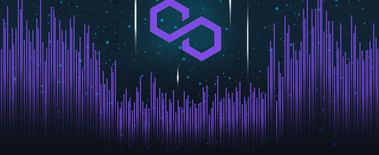Toronto native Carl Koenemann has leveraged his childhood interest in video games and finance into expertise in the cryptocurrencies market.
Together with graduates from three Chicagoland universities, Koenemann’s company has created a data analytics system that tracks cryptocurrency trading activity.
Clients pay a fee for monthly access to a private Telegram chat. Once in the chat, they have access to the valuable information Koenemann’s company provides about the current state of the cryptocurrency market.
What Is Cryptocurrency?
So what is cryptocurrency, anyway? How does it differ from using money? Like a national currency, cryptocurrency is used to purchase goods and services. Unlike money, however, cryptocurrency is only used digitally. It uses a decentralized computer technology called blockchain to keep a secure record of transactions.
What Is a Blockchain?
A blockchain is a type of database. It is most famous for its close association with Bitcoin, the most well-known type of cryptocurrency. Blockchain gets its name from the way it stores information, which is distinct from other databases.
With blockchain, information is stored in “blocks,” which are then “chained” together. Because of how this information gets stored, it is very difficult to hack without users immediately finding out. This is especially true in the case of Bitcoin, where transactions may be seen by all users. Many supporters of cryptocurrency find this level of security more attractive than typical online transactions.
Cryptocurrency: The Pros
What makes cryptocurrency so appealing? There are several distinct advantages that cryptocurrency holds over money:
- The blockchain system’s decentralized technology means that cryptocurrency transactions are more secure than regular online purchases.
- Because cryptocurrency is not managed by central banks, its value is not subject to inflation the way regular currency is.
- Many proponents of cryptocurrency see it as the way all purchases will be made in the future.
Cryptocurrency: The Cons
Perhaps the biggest drawback where cryptocurrency is concerned is how unpredictable its short and long-term future is. Compared to other investments, cryptocurrency is generally viewed as a greater financial risk because of the way its market value can fluctuate.
This is where data analytics, such as those generated by Carl Koenemann, come into play. By studying the market activity for cryptocurrencies and honing in on atypical activity, Koenemann’s work can help investors track market activity and make accurate predictions about the future of cryptocurrency.
What Cryptocurrencies Are There?
There are currently more than 10,000 cryptocurrencies currently traded publicly. Much like casino tokens, many cryptocurrencies are issued by companies in order to make purchases from them. The two most well-known and profitable cryptocurrencies are Bitcoin and Ethereum. While most people have heard of Bitcoin, Ethereum is newer but has gained a reputation with data analysts like Koenemann and traders alike.
Ethereum, Explained
Used and recommended by Koenemann, Ethereum is an open-ended, decentralized software platform, and the most popular of its kind since its launch in 2015. After Bitcoin, Ether is considered the most popular type of cryptocurrency; however, Ethereum is more than an alternative to money.
Not only is Ether used as a digital currency, but it is also used to run applications on Ethereum. While Bitcoin was created to be an alternative for national currencies, Ethereum’s main purpose is to create a secure software platform for contracts and other secure applications. Using contracts and other secure documents on a decentralized platform is a smart way to keep sensitive materials secure from third-party breaches.
The News About NFTs
NFT stands for non-fungible token. ‘Non-fungible’ means that the token cannot be substituted for something else. In other words, each NFT is unique.
NFTs and Ethereum
Most NFTs are part of the Ethereum blockchain. The unique nature of each token helps to ensure data security.
NTFs and Digital Art
Because virtually anything can be turned into an NFT, lately there has been a lot of conversation about NFT being used to sell digital art. This could be applied to GIFs, Tweets, Tik Toks – pretty much any form of digital content. While anyone can make a copy of digital content, turning these items into NTFs makes transferring their ownership to the buyer easy.
NTFs are good news for digital artists struggling to market their work. NFTs, ensure that artists are paid percentages whenever a digital work transfers ownership. Likewise, NFTs grant usage rights to buyers. The good news for artists and buyers is that blockchains make it difficult for someone to steal or improperly use a digital work of art that has been transformed into an NFT.
Conclusion
Carl Koenemann understands the real and perceived risks of trading in cryptocurrency. He takes pride in helping investors make well-informed money management decisions related to cryptocurrency, Ethereum, and NTFs. Although the market can be a volatile place for cryptocurrency, Koenemann’s data helps to demystify the process and ground investors’ decisions in sound advice.











